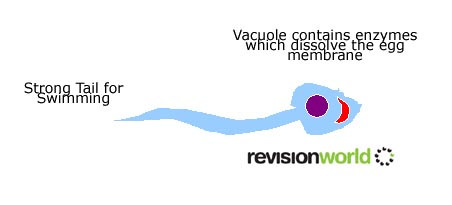Organisation and Differentiation
Multicellular organisms need to have a coordinated system of structures so they can carry out vital processes, for example nutrition, respiration and excretion.
Principles of organisation
Cells are the most basic unit of living organisms.
Tissues are collections of similar cells that work together to carry out the same function.
An organ is formed when a group of tissues combine together and do a particular job.
Organs form organ systems. For example the intestines and stomach are part of the digestive system.
Organ systems work together to form a complex multicellular organism.
Cell Specialisation
Plants and Animals have lots of different types of cells and each cell adapts to carry of a particular function. Although most cells operate together as tissues some cells (such as white blood cells) can act independently.
Root Hair Cell
Root hair cell in plants: It is adapted to do its job of taking in water and nutrients by having:
- - a large surface area
- - a thin cell membrane
Sperm Cell
The Sperm cell is an example of a specialised animal cell:

See the video below on specialised animal cells
Red Blood Cells
Carries oxygen around the body

Adaptations: No nucleus, large surface area, so maximum area for oxygen carriers: haemoglobin
See the video on specialised animal cells
White Blood Cells
Fight disease, some make antibodies

Adaptations - Irregular shape, they can change shape to squeeze out of blood vessels and get to the site of infection. Others have cytoplasm which can flow making it possible for the cell to change shape, surround and engulf bacteria. Can increase in numbers to fight disease.
See the video on specialised animal cells
Specialised plant cells
This video explains more about specialised plant cells
Specialised Animal Cells
This video looks at specialised Animal cells
